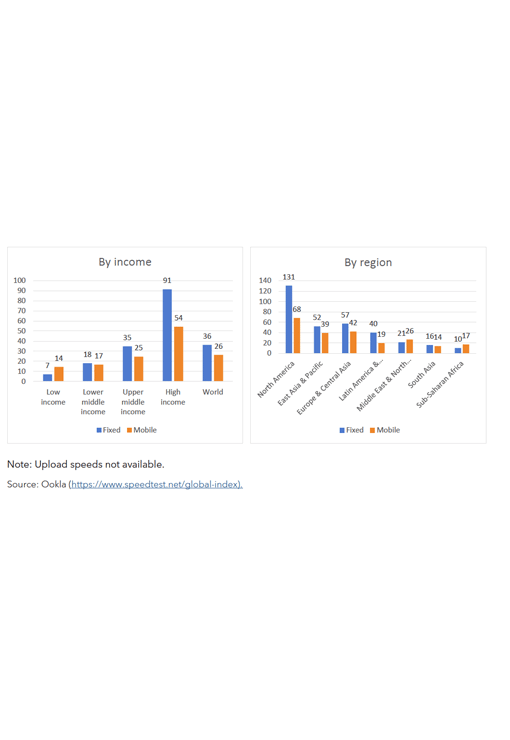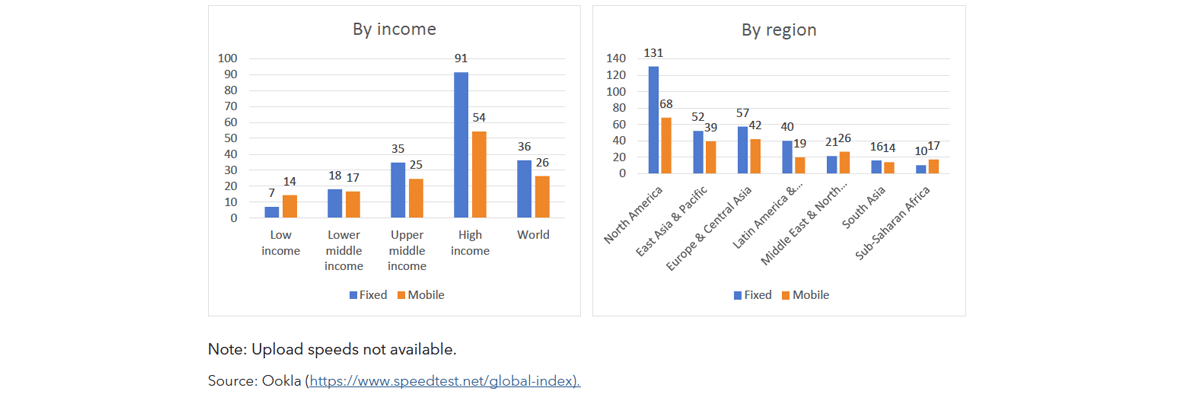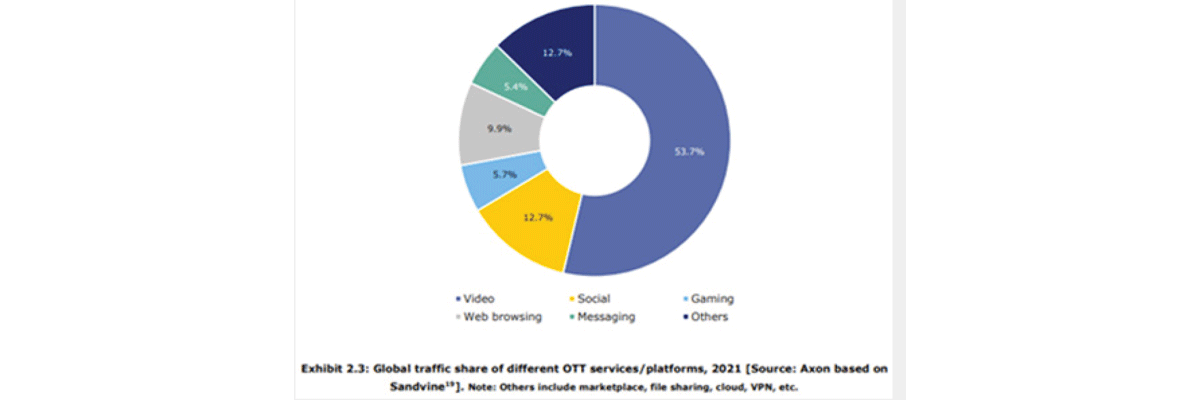The report also outlines two developments that need to take place in order to realise a transition to a more connected post-pandemic world: a regulatory environment that stimulates broadband services and attracts investment, as well as strategies and policies that enable broadband adoption and accelerate digital inclusion. One result of the pandemic was the fact that it made the digital divide very clear, highlighting the fact that numerous people lacked the skills, devices, funds and internet access required for online education and working. 2.7 billion people currently have no broadband and can’t access public services or learn from home.
- Internet use grew to 66% of the global population in 2022, reaching 5.3 billion people, up from 54% in 2019. A significant part of this growth was driven by use of videoconferencing for work and education as well as online shopping, access to public services and remote health consultation. Low and lower middle-income countries are particularly disadvantaged, however, as less than half of households have an Internet connection.
- Networks withstood the huge explosion in data traffic triggered by COVID-19. After a blip following the onset of the pandemic, average broadband speeds increased despite the giant jump in demand.
- Gender equality in access to digital services is improving. ITU estimates that 69 per cent of men were using the Internet in 2022 compared to 64 per cent of women, while selected regions and income groups have reached gender parity.
- Although affordability of broadband services decreased in 2021, this is not so much due to an increase in service charges, which continued to drop, but due to a sharp drop in incomes as a result of COVID-19.
- Globally, median mobile broadband speeds were 30 Mb/s down and nine up in March 2022. Fixed broadband stood at 63 Mb/s down and 27 Mb/s up. Median mobile speeds would just be sufficient for one person videoconferencing while the fixed speeds would be the minimum for a family. These are global medians, which means that over half of households with broadband have insufficient quality for videoconferencing.








